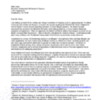Epinephrine, not Benadryl®, is the first line of treatment for severe allergic reactions.
On average, a typical U.S. classroom has around two students with food allergies. And about 20 to 25% of allergic reactions requiring epinephrine in schools occur without a prior history of food allergy.1
These numbers are significant. School is a common place for children to experience anaphylaxis – a serious allergic reaction. That fact is why most U.S. states now have policies allowing schools to stock epinephrine, thanks to the School Access to Emergency Epinephrine Act.
But the Weatherford Independent School District in Texas recently took a step backward. They created a policy that guides staff to give Benadryl® for severe allergic reactions, instead of unassigned stock epinephrine. But this goes against medical evidence. Epinephrine is the first choice to treat anaphylaxis.2 Benadryl® cannot relieve life-threatening reactions.34
Their new policy does not apply to students with documented allergies who have their own prescriptions for epinephrine auto-injectors. But it still puts the district’s school children at risk. Every minute counts when a severe allergic reaction starts. If a child has an allergic reaction and doesn’t get epinephrine right away, they are at risk of being hospitalized, or in severe cases, death.
The Weatherford Independent School District says they feel that they can’t have someone trained to give an epinephrine auto-injector during all times the school is open. But training is quick and simple. And there are many resources available to help anyone learn how to use one. Learning to use an epinephrine auto-injector only takes a few minutes.
The Asthma and Allergy Foundation of America (AAFA – Kids With Food Allergies is a division of AAFA) has sent letters to the Weatherford Independent School District urging them to change this policy. We offer our help to provide them with the right resources or access to local experts who can help them change to a policy that looks out for the lives of their staff and students.
We also plead with other school districts, child care centers and after-school programs – any institutions who work with children – to not follow the example of the Weatherford Independent School District. Stocking and using unassigned epinephrine is possible, practical and life-saving.
Read our letter to Mike Guest, president of the Weatherford Independent School District Board of Trustees.
References
1 Sicherer SH, Furlong TJ, DeSimone J, Sampson HA. The US Peanut and Tree Nut Allergy Registry: characteristics of reactions in schools and day care. J Pediatr. 2001;138(4):560-565.
2 Sicherer SH, Estelle F, Simons R. Epinephrine for First-aid Management of Anaphylaxis. Pediatrics. 2017.
3 Fineman SM. Optimal treatment of anaphylaxis: antihistamines versus epinephrine. Postgrad Medicine. 2014.
4 Andreae DA, Andrea MH. Should antihistamines be used to treat anaphylaxis? British Medical Journal. 2009.



Comments (3)